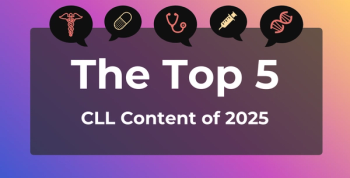
Ofatumumab Reduced MS Relapse Rate for Untreated, Newly Diagnosed Patients
The analysis, which was released on the first day of the meeting, was one of many that tried to demonstrate that earlier treatment in newly diagnosed and younger patients may forestall disease progression and disability.
Ofatumumab, a targeted B-cell therapy for patients with relapsing forms of multiple sclerosis (RMS), significantly reduced the relapse rate in a subgroup of patients who were treatment naïve and had a new diagnosis, according to study results presented Friday at the MSVirtual2020: 8th Joint ACTRIMS-ECTRIMS Meeting.
The post hoc data were announced by Novartis, which markets the drug under the name Kesimpta. The
The analysis, which was released on the first day of the meeting, was one of many that tried to demonstrate that earlier treatment in younger patients with a new diagnosis may forestall disease progression and disability.
The phase 3 ASCLEPIOS I and II trials (n = 615) evaluated the efficacy and safety profile of treatment with ofatumumab in a subgroup of patients with early RMS (newly diagnosed and treatment naïve). The median age and duration of their MS since diagnosis were 36 and 0.35 years, respectively.
Compared with teriflunomide, results showed that ofatumumab:
- Significantly reduced the annualized relapse rate (ARR) by 50.3% (0.09 vs 0.18; P <.001).
- Significantly reduced the mean number of both gadolinium-enhancing T1 lesions by 95.4% (0.02 vs 0.39; P <.001) and new or enlarging T2 lesions by 82.0% (0.86 vs 4.78; P <.001).
- Showed a relative risk reduction of 38% (P = .065) in 3-month confirmed disability worsening (CDW) and a significant relative risk reduction of 46% (P = .044) in 6-month CDW.
Overall, ofatumumab had a similar safety profile to teriflunomide,
Adverse events (AEs) occurred in 84.7% ofatumumab- vs 86.0% teriflunomide-treated patients; serious AEs (SAEs) were reported in 7.0% and 5.3%, respectively. Infection rates were comparable between ofatumumab (56.1%) and teriflunomide (56.5%); serious infections rates were 1.9% and 0.7%, respectively, and no opportunistic infections were reported.
"These encouraging data show that newly diagnosed and treatment-naïve patients may benefit from lower disease activity when treated with Kesimpta," said Amit Bar-Or, MD, FRCP, FAAN, FANA, the inaugural Melissa and Paul Anderson President’s Distinguished Professor of Neurology at the Perelman School of Medicine at the University of Pennsylvania, director of the Center for Neuroinflammation and Experimental Therapeutics, and chief of the Division of Multiple Sclerosis and Related Disorders.
An additional post hoc analysis of the same subgroup showed that the odds of achieving no evidence of disease activity (NEDA-3; no relapses, no MRI lesions, and no disability worsening combined) with ofatumumab vs teriflunomide were more than 3-fold higher at the first year (47.0% vs 24.7% of patients; P <.001) and more than 14-fold higher at the second year of treatment (92.1% vs 46.8% of patients; P <.001).
Newsletter
Stay ahead of policy, cost, and value—subscribe to AJMC for expert insights at the intersection of clinical care and health economics.







































